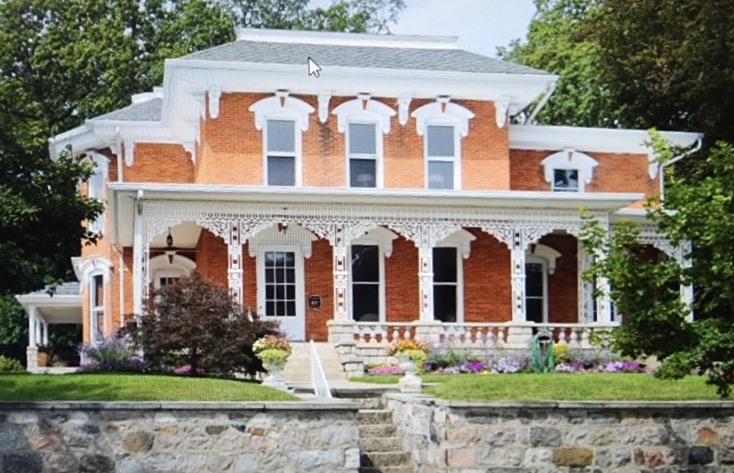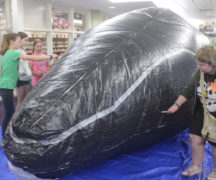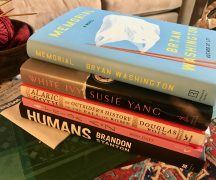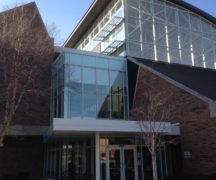(Written by Marnie Pratt, Wood County District Public Library local history librarian, with guidance from Michael Penrod, library director.)
The Carter House, at 307 N. Church St., has been selected by the Bowling Green Historic Preservation Commission as Historic Building of the Month for June.
“An ornament to the city,” “one of the finest estates in Bowling Green,” and “a jewel in the crown of Bowling Green.” These phrases have all been used to describe the 19th century brick Italianate-style house at 307 N. Church Street. Today the building is owned by the Wood County District Public Library, which uses and rents the facility for both public and private events, but the home has a history of connections to several prominent Bowling Green citizens and organizations.
Norton Reed and his wife, Ellen, came to Wood County in 1865 with hopes of establishing a grocery business. This was a time of great economic prosperity in the area, and so, it wasn’t long before Reed found himself to be one of Bowling Green’s most successful entrepreneurs and largest property owners. His home at 307 N. Church St, situated upon one of the highest points in the city, was perhaps the finest of these properties.
In addition to his businesses, Reed was involved in other aspects of his community. He was elected to Bowling Green City Council in 1867, 1869, and 1871, and he was a key player in the campaign to move the county seat from Perrysburg to Bowling Green. In fact, he helped oversee and finance the construction of the city’s first courthouse, which was torn down to build the current one.
On a personal level, Reed could be considered one of Ohio’s early “snowbirds,” as he was well-known to spend winters in Florida, Texas, and even California. He and his wife raised three daughters, Julia, Helen, and Luella, all of whom also lived and raised families in Bowling Green.
After Ellen Reed’s death in 1897, Norton put the residence up for sale, and it was purchased by attorney Benjamin James. James earned his law degree in 1887 from Yale University, after which he came to Bowling Green and partnered with Edward Beaverstock to form a law firm.
James & Beaverstock quickly became a very successful practice, maintaining offices in both Bowling Green and Toledo.
Similar to Reed, James’ endeavors extended beyond his occupation. He was elected as Bowling Green city solicitor in 1890, which he was forced to resign from after only a year when elected as an Ohio State Representative. He was re-elected to the General Assembly in 1893. On a more local level, James was part of the campaigns to build a new courthouse in Bowling Green and establish the Bowling Green Normal College.
In 1901, James married Myrtle E. McElroy, who was an active member of a number of Bowling Green social and charitable organizations, most notably the Shakespeare Round Table.
Mrs. James frequently hosted meetings for this group in the front parlor of the Carter House, which of course, would have been referred to as the James House at this time. In 1911, the group launched a campaign to create the first public library in Bowling Green. This campaign was undeniably successful, as the library the group founded eventually became the Wood County District Public Library we know today.
Benjamin James died in 1935, and shortly thereafter, the James’ home at Church Street was sold off in a sheriff’s auction likely to settle James’ estate. The house changed hands a number of times between 1935 and when the library acquired the property in 2006. The property was donated to the library by Robert and Patricia Mauer, who did so in the memory of Robert’s aunt, Martha Maurer Carter.
Martha Carter was born in Bowling Green and attended both Bowling Green High School and Bowling Green State University. She went on to teach grade school for over 35 years, and in fact, taught at the Church Street School that was once located right across the street from the Carter House. Since the Wood County District Public Library’s mission focuses on life-long learning, Martha Carter seemed the perfect person to provide the namesake to the newly acquired building.
Today, the house’s exterior is very similar to when either the James or Reed families lived there, and in fact, the library ensured the second-floor porch be restored to its original state during the remodel.
The inside of the house certainly has some differences now, but significant efforts were made to maintain period-appropriate paint and woodwork colors, furniture, and other décor. The front parlor, where Mrs. James would have held Shakespeare Round Table meetings, has even been named the Shakespeare room, and the group, which still exists, regularly holds its meetings there.
Community members are also able to rent the Carter House for events. For more information, patrons should contact Angie Babcock at 419-352-5104.
Would you like to nominate a historic building or site for recognition? You can do this through the City website at https://www.bgohio.org/FormCenter/Planning-13/Historic-BuildingSite-Nomination-Form-83
You can learn more about the Historic Preservation Commission by attending their meetings (the fourth Tuesday of each month at 4 p.m.) or by visiting their webpage at https://www.bgohio.org/436/Historic-Preservation-Commission





